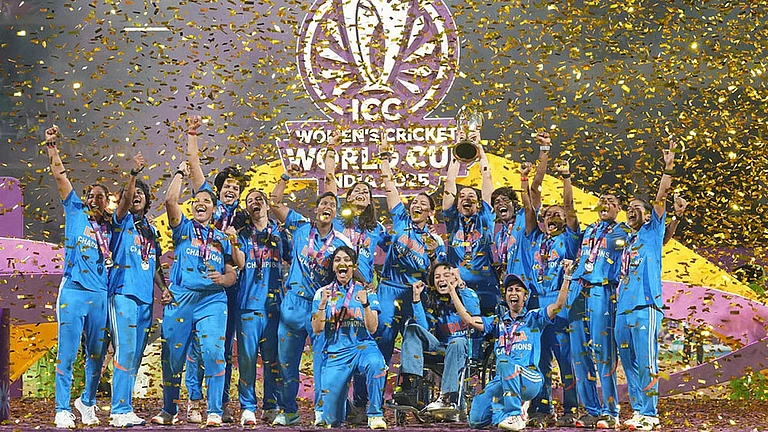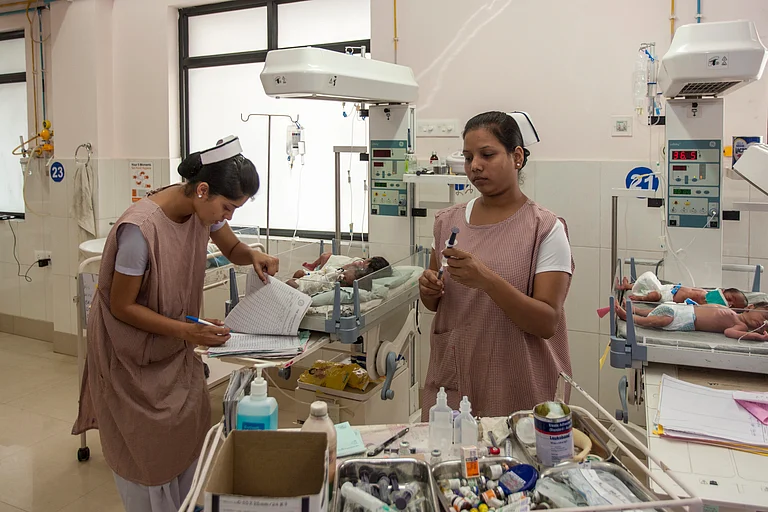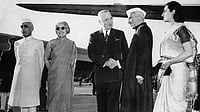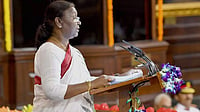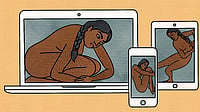Last year, a film with an intriguing plot made its way from Mumbai into my home in Michigan. Roohi, the story of a shy young woman kidnapped by two men, is set in a small town where bride-kidnapping is depicted to be a socially sanctioned route to marriage. Much to our horror (and mirth), we soon learn that Roohi’s body is possessed by a vengeful, seductive demoness; the plot twist comes when the more traditional of the two men becomes besotted with the docile woman, while the other man, with a bit of a zombie in him, falls hard for her angry spirit tormentor. The film is filled with witty dialogue and wicked hilarity, such as when the suitor with his interest in astrology asks the demoness her zodiac sign (“Personality se toh Leo lag ri,” he says, gushing.) Or when he conspiratorially offers some gemstone advice to cool down her supernatural temper (“Aap na moti dharan kiya karo.”)
So entertaining is the film, in fact, that one might entirely miss the social critiques it offers. Especially the climax, which is quite unexpected: while the two males have unwittingly become competitors in vying for her hand(s) in marriage, marking territory and even trying out magic spells to separate the docile from the defiant in the woman’s body, it is ultimately the men who are rejected. On the level of the plot, the demoness sprung from a patriarchal milieu wants to get married above all else, and will not leave the human body she inhabits until then; and so the quiet woman decides to solve the knotty problem by “marrying” the demoness (within) herself, taking the ritual saat phere around the sacred fire. Apart from an obvious critique of heteronormativity, I read into this a more subtle message that transcends discussions about sexual orientation: the woman is choosing not another but herself. She is choosing to love herself, to reconcile the dark and light—also socially-defined categories—within her psyche such that love and rage, female conformity and feminist rebellion, both become one.
ALSO READ: Total Eclipse Of The Heart
In 2020, the Bollywood feminist horror film Bulbbul did something similar. Set in a nineteenth century Bengal of zamindari excess, this story was different from earlier tender films such as Balika Badhu. Here the young bride, who develops an affectionate bond with the brother-in-law closer to her age, faces heinous violence from her jealous older husband, who also mutilates her feet; the same night, as she lies plastered in bed, she is raped by another family member. Years later, the brother-in-law returns to rumours of a bloodthirsty demoness (chudail) with feet turned backwards who roams the jungles at night and devours cruel men who have murdered their wives or sexually violated other girls. In one frame, we see the “demoness” embracing a young girl she has saved from being raped; and the visual at once reminds us of the Goddess Kali. The child, too, sees her as good rather than as evil, and later we are told: “Woh daayan nahin devi hai” (not a demoness but a goddess.) The exquisite cinematography also says this with its poignant use of the colour red. Red, the colour of sindoor, of blood, and of the blood-red moon under whose half-light the devi, goddess—powerful enough on her own that she does not always need a male consort—doles out gender justice.

Subversive goddess cults have been an integral part of our society’s cultural fabric and its numerous polytheistic traditions such as that of the virgin-whore and sacred-profane dichotomies and prescribed female submissiveness that undergirds much of mainstream Western theology is absent in at least some of our traditions. Several regional/local practices come to mind here, as does female-dominant Shaktism; but even the male-dominated theology of Vaishnavism made way for the holy and erotic “love-goddess” Radha. Resplendent in the writing of poets such as Jayadeva, Chandidas, and Vidyapati, Radha is worshipped in temples despite being neither her male consort’s wife nor a mother. Early and medieval texts also depict independent women—scholars, sages, single mothers, travelers, courtesans, queens. Whether we call it history, literature, or myth, the (imagi)nation, at least in its interstices, has allowed female defiance. Then why does our cultural iconography still accord emblematic status to the married, self-sacrificing woman? Indian culture is not a monolith, any more than “Indian women” are a monolithic category. Then why does patriarchy, as upheld by men and women, insist that “our” women must ultimately find their fulfilment through marriage and motherhood?
ALSO READ: ‘Laab’ In The Mountains
There are those who argue that being single is a choice available to only the most privileged women, and it cannot be denied that social class, caste, and locational privilege play an important role in shaping life’s opportunities and outcomes. But it may be reductive to view this issue solely through the lens of privilege since, ironically, it is privileged women who often are under the greatest pressure to conform, to post images of picture-perfect lives on Facebook and Instagram, whatever may be their lived truths. In contrast, I vividly remember a poor domestic worker in a family counseling centre in north India some years ago, one of her hands still slung in a cast from when her husband had broken it, and the other clutching the hand of her five or six-year-old daughter. The middle-class counsellors promised they would speak to him, and tried to get her to reconcile—for the sake of the child, they lectured sagely. “Nahin,” she said defiantly. “Mere paise ki daaru peekar mujhe hi maarta hai.” Nahin. No. And she walked out, this woman who had never gone to school, yet who was choosing to love and honour her own life, in a world where most men’s love for themselves (and the love they receive from family and society) is celebrated.
The Nobel Prize-winning Rabindranath Tagore has a lyrical poem, Bhalobashi, Bashibashi (I love, I love), which rescues love from the limitations of language, the need for love to always have an/other defined external object. Tagore wrote, with empathy and understanding, of the social challenges often faced by creative, talented women. In my edited volume Love is Not a Word: The Culture and Politics of Desire, the essays on inter-caste, interracial, inter-religious and other forms of love in India also includes my essay on single women and self-love, which attempts to acknowledge how single women have always existed more in life than in literature. Yet, despite all these examples, in past and in present, in books and in real life, women who make unconventional choices continue to face misogyny even in so-called “progressive” spaces. Through sage advice and sexist humour, we are constantly reminded that a woman is incomplete without a man, no matter how odious, inappropriate, abusive, unavailable, or incompatible.
So it is incredibly powerful to see women push back against this narrative in the public, to challenge the usual literary and cultural stereotypes by sharing art, adventures, books and banter, meals, and songs, and eccentric journeys of self-exploration. At the very least, it reminds society that, while it is beautiful to love and be loved romantically, there are many other forms of fulfilment too—education, vocation, travel—not to mention other fulfilling forms of love, such as friendship. And that being single can be yet another way to live life, with purpose and intentionality, outside of the log kya kahenge calculus of sanctions and social rewards.
(This appeared in the print edition as "I, Me, Myself")
(Views expressed are personal)
ALSO READ
(Debotri Dhar teaches women’s and gender studies at the University of Michigan, US)








